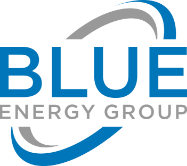In the One Big Beautiful Bill Act (OBBBA), signed into law on July 4, 2025, the domestic content bonus under Section 48E (the clean electricity investment tax credit, or ITC) provides an additional 10 percentage points to the base credit rate (or 2 percentage points if prevailing wage and apprenticeship requirements are not met) for qualified facilities that satisfy specific domestic content requirements. These include: (i) all steel and iron used in structural components must be 100% domestically produced (unchanged from the Inflation Reduction Act, or IRA), and (ii) a specified adjusted percentage of the total cost of manufactured products (including components) must be attributable to items mined, produced, or manufactured in the United States. Separate (but often aligned) domestic content requirements apply to avoid haircuts (reductions) in elective direct pay amounts under Section 6417 for applicable projects.
OBBBA addresses a drafting discrepancy in the IRA where the domestic content requirement under Section 48E for qualifying for the bonus was frozen at 40% regardless of the year construction began. In contrast, the requirement to avoid haircuts in elective pay under Section 6417 escalated over time from 40% before 2025 to 55% after 2026 (with the same escalating schedule applying to both the ITC and the clean electricity production tax credit, or PTC, under Section 45Y). This made it possible for ITC projects in later years to meet the 40% threshold to earn the bonus but fail to meet the higher threshold to avoid the haircut on the total payable credit amount, creating inconsistent incentives and haircut risks. OBBBA resolves this by aligning the adjusted percentage thresholds for the Section 48E bonus with those under Section 45Y and Section 6417, introducing a phased increase effective for newer projects.
Adjusted Percentage Requirements for Manufactured Products
The following table outlines the domestic content thresholds for Section 48E under OBBBA. These percentages apply to qualifying for the domestic content bonus and (separately) to avoiding the haircut for elective direct pay under Section 6417 (subject to exceptions for unavailability of domestic materials or cost increases exceeding 25%).
| Construction Begin Period | Applicable Rules | % Required to Earn Domestic Content Bonus | % Required to Avoid Haircut for Elective Pay |
| Before January 1, 2025 | Old IRA | 40% | 40% |
| January 1, 2025 – June 15, 2025 | Old IRA | 40% | 45% |
| June 16, 2025 – December 31, 2025 | New OBBBA | 45% | 45% |
| Calendar year 2026 | New OBBBA | 50% | 50% |
| After December 31, 2026 | New OBBBA | 55% | 55% |
These thresholds align with the PTC under Section 45Y.
Projects Subject to New OBBBA Rules vs. Old IRA Rules
- New OBBBA Rules: Apply to projects where construction begins on or after June 16, 2025. These projects must meet the aligned, phased-up thresholds above to qualify for the domestic content bonus and avoid elective pay haircuts. Transitional relief may be available via an election to exempt certain products or materials under binding contracts entered into before June 16, 2025, provided the project meets specific begin-construction and placed-in-service conditions.
- Old IRA Rules: Apply to projects where construction begins before June 16, 2025. Under these rules, the adjusted percentage for manufactured products under Section 48E is a flat 40% for earning the domestic content bonus (regardless of year), while the percentage to avoid elective pay haircuts escalates based on the construction begin year as shown in the table. This fixed bonus threshold created the discrepancy with the escalating requirements under Sections 45Y and 6417, which OBBBA corrects for newer projects.
Note that the steel and iron requirement remains 100% domestic under both old and new rules. Additionally, OBBBA’s changes do not retroactively apply to pre-June 16, 2025, projects, preserving the IRA framework for those. For direct pay elections under Section 6417, the haircut amounts if the requirements are not met remain unchanged from the IRA (e.g., 10% reduction for projects beginning construction in 2024; 15% in 2025; and 100% in 2026 or later), but the aligned thresholds make meeting the requirements (and thus avoiding haircuts) more consistent across ITC and PTC projects going forward.
Haircut Percentages for Failing Domestic Content Requirements in Elective Direct Pay
Under the Inflation Reduction Act (IRA), for projects electing direct pay under Section 6417 (applicable to tax-exempt entities and others for clean energy credits like the Investment Tax Credit under Section 48E and Production Tax Credit under Section 45Y), failing to meet domestic content requirements (without qualifying for an exception) results in a “haircut”—a reduction in the payable credit amount. This applies to projects of 1 MW or greater. The One Big Beautiful Bill Act (OBBBA), signed into law on July 4, 2025, does not alter these haircut percentages for Sections 48E or 45Y, though it aligns the domestic content thresholds to avoid them and introduces a separate 20% haircut for the Clean Fuel Production Credit under Section 45Z starting in 2026 for certain foreign-sourced feedstocks.
The haircut percentages and the calendar years they begin applying (based on when construction begins) are as follows:
| Construction Begin Year | Haircut Percentage | Payable Percentage |
|---|---|---|
| 2024 | 10% | 90% |
| 2025 | 15% | 85% |
| 2026 and later | 100% | 0% |
These reductions do not apply if the project qualifies for an exception (e.g., domestic materials unavailable, unsatisfactory quality, or inclusion would increase costs by more than 25%). For projects beginning construction before 2024, no domestic content requirement (and thus no haircut) applies to direct pay.
